A New COS x Tabata Shibori Collab Gives Ancient Japanese Artisanship New Life
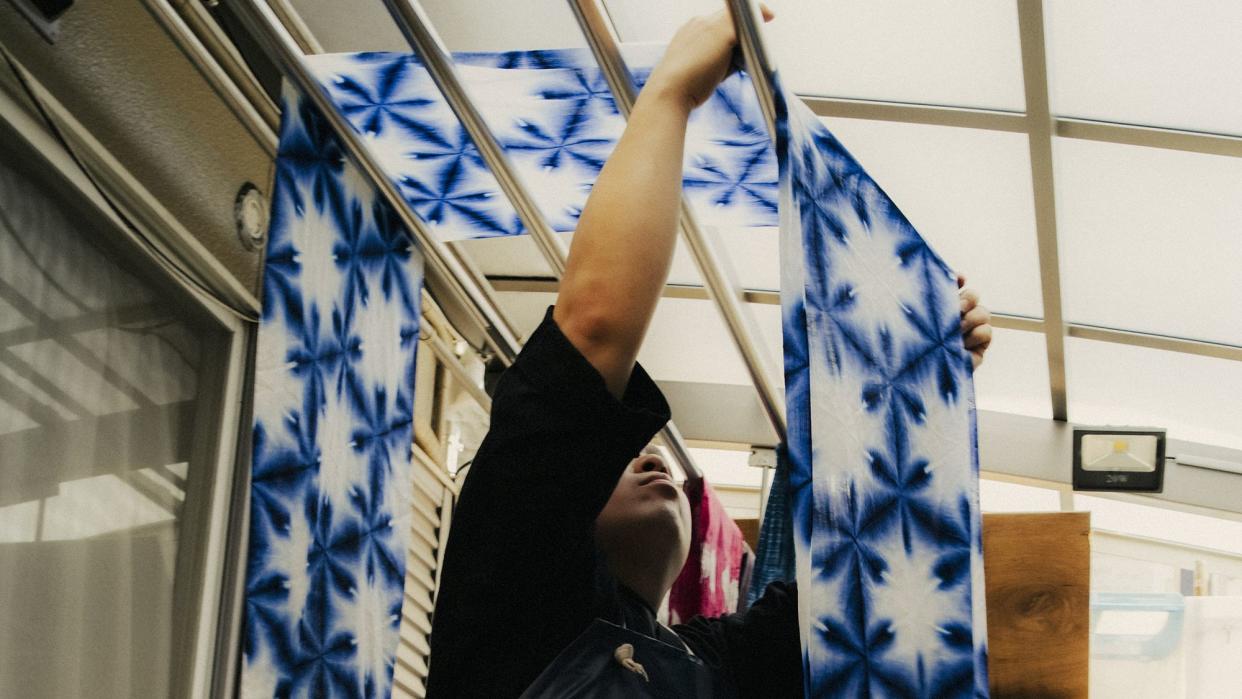
"Hearst Magazines and Yahoo may earn commission or revenue on some items through these links."
When Kazuki Tabata first heard that the folks at COS were interested in working with him, he didn't believe it. The Kyoto-based Shibori artisan is active on Instagram—one way to boost the profile of the intricated, painstaking work he creates with his wife and team of assistants. And one day, just about a year ago, he logged on to find a DM from the Lond0n-based brand in his inbox.
"I thought it was a prank," he tells me through an interpreter in a hotel suite in his hometown. Still, he decided to entertain the conversation. By the middle of the summer, with oppressive heat bearing down outside, he was toiling away in his workshop, devising patterns that might work for the collaboration. "I was still suspicious at the time," he says.
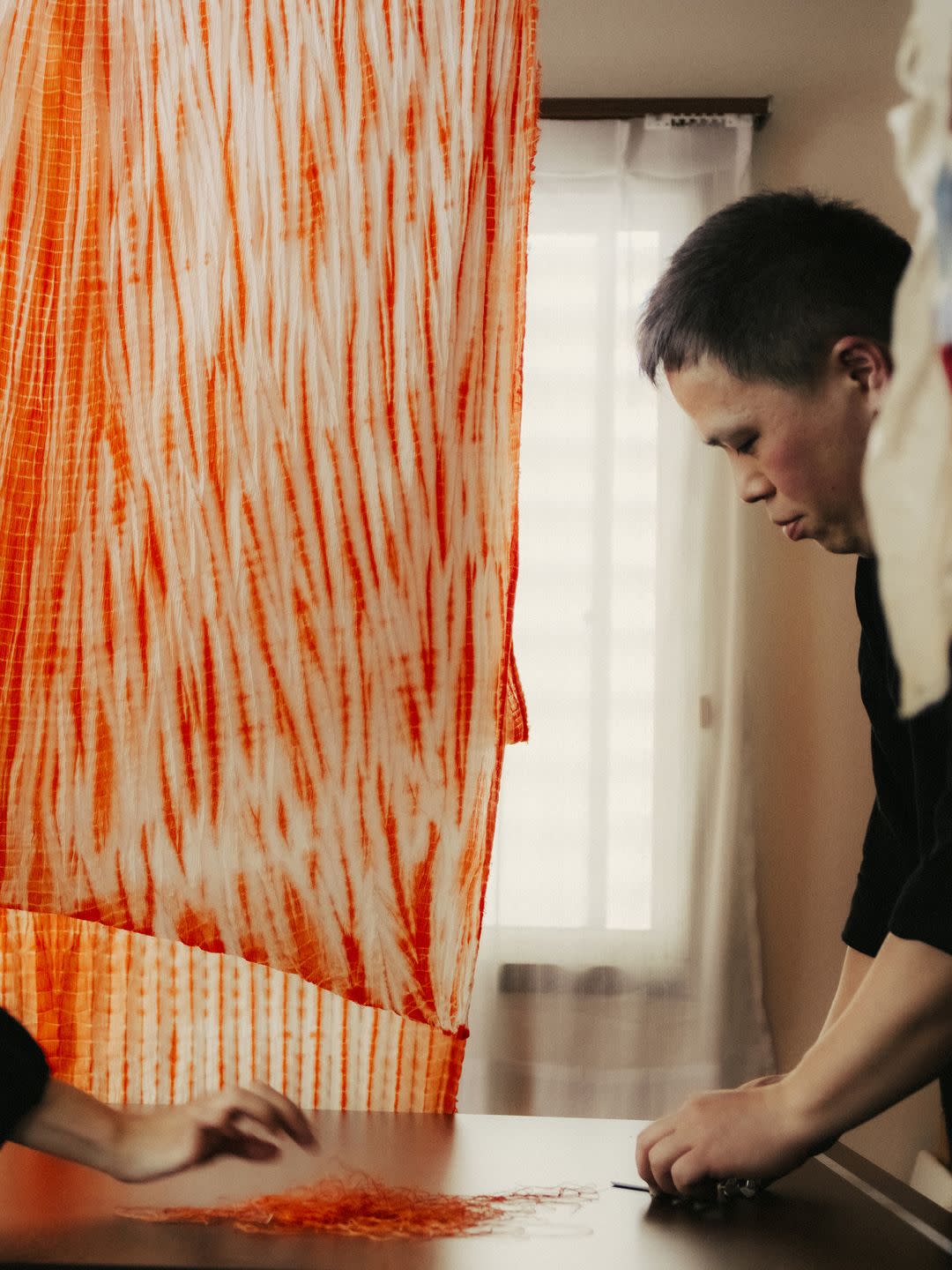
Luckily, his suspicions weren't founded. With a collection inspired by nature in the works, COS design director Karin Gustafsson and her team were searching for a way to mimic the shimmering surface of water. They landed on the organic, slightly irregular patterns created by shibori, an ancient resist-dyeing technique that uses folding, binding, clamping, stitching, and more to create intricate designs ranging from stripes to snowflakes.
"We didn't feel that we should deliver that ourselves," Gustafsson explains. "It's the work of a real craftsman." So, through a few industry contacts, the COS crew reached out to Tabata. They talked values, aims, and patterns—and then set about creating a series of original shibori designs that would highlight Tabata's unique shibori style while reinforcing that central idea of fluidity.
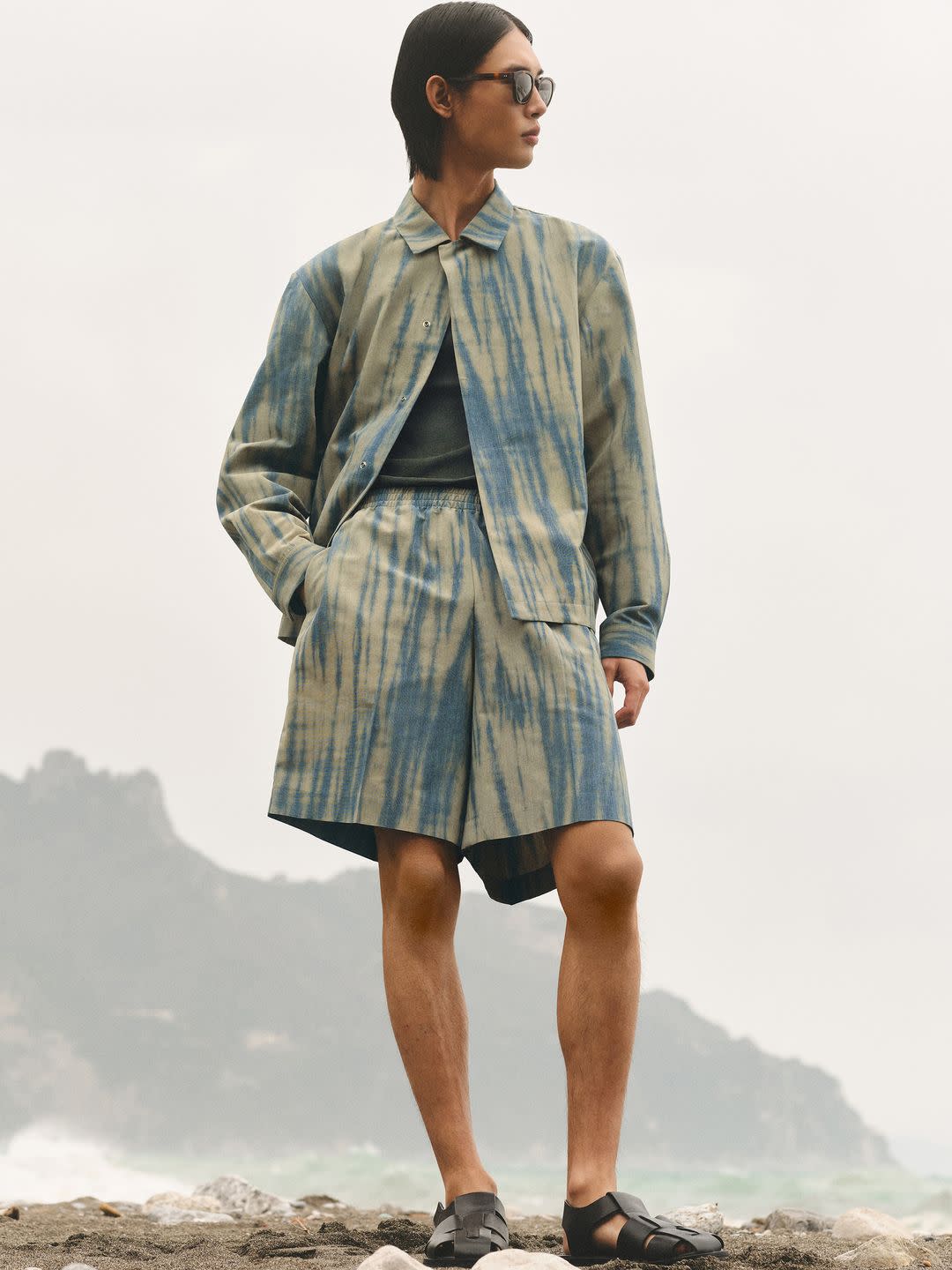
And now, a year later, their collaboration is live. It features an array of Tabata Shibori designs executed with a range of techniques and materials. A matched shirt jacket and shorts, for instance, use an ikat weave to further blur the edges of the stripes made with tesuji shibori, where fabric is folded into pleats, bound with thread, and then dyed. A silk scarf features the signature snowflake—or, if you like, hemp leaf—of sekka shibori. Another matched set, this time a camp-collar shirt and swim trunks, grafts tesujui stripes onto seersucker, furthering the wavy, watery effect.
It's all very cool stuff—entrancing to look at, but remarkably easy to wear (especially when compared to the kaleidoscopic, multi-colored tie-dye you'll find in a jam-band parking lot). But there's a lot more to this collaboration than what you see on the surface. Like so many old-school crafts, shibori is facing something of a generational crisis. As older artisans retire or pass on, fewer and fewer young people are taking it up. The issue is one with which Kazuki Tabata himself is intimately familiar.
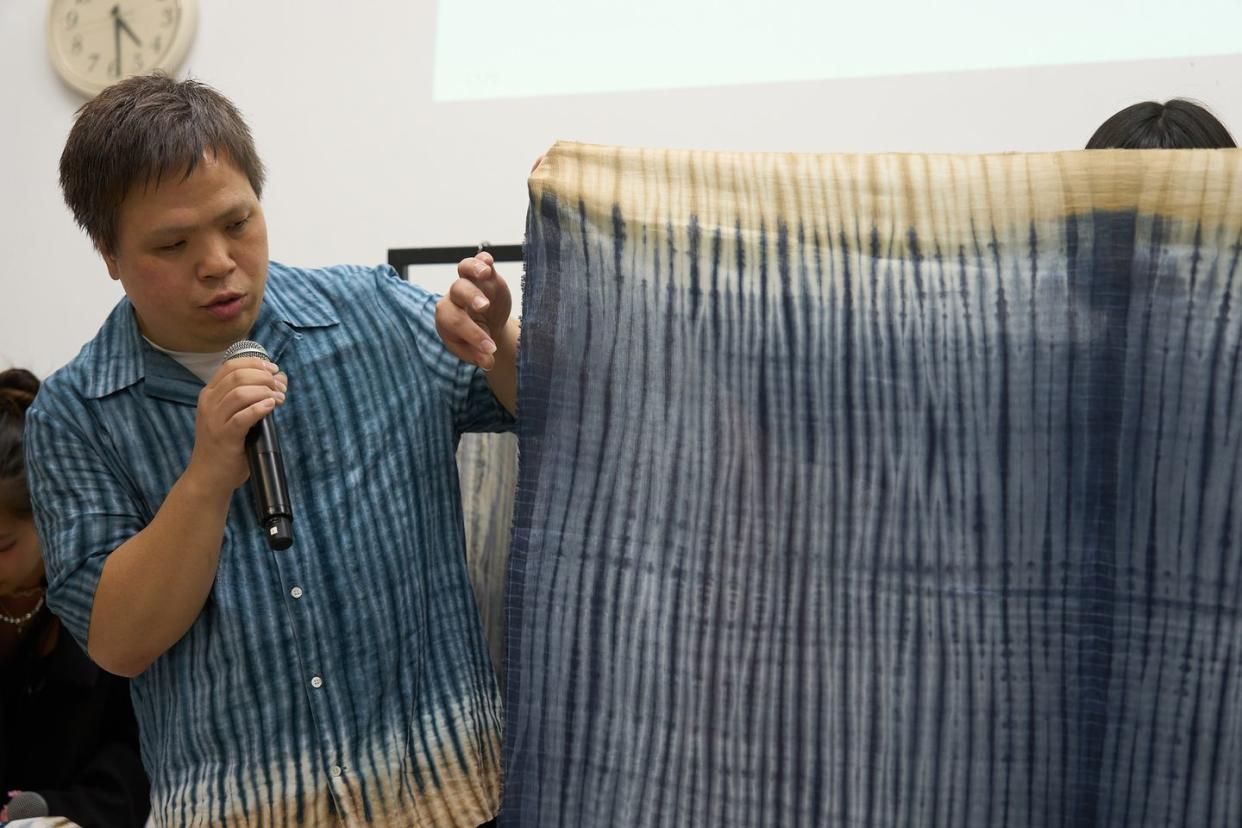
Originally a student of sound and lighting and then a salaryman, Tabata wasn't initially fated for a future in Shibori. "But my father’s uncle was a Shibori craftsman," he explains. "He passed away, and at his funeral, my aunt was saying that she wanted to throw away all the tools that he used for shibori." Struck by a sudden desire to preserve both the tools and the family tradition, Tabata took the tools from his aunt and began training himself in shibori.
Now, many years and one high-profile collaboration later, he remains committed to preserving and expanding the legacy of shibori not just in Japan but around the world. In late May, in anticipation of the collaboration's debut, Tabata Shibori and COS hosted a workshop at Kyoto University of the Arts. Students and press gathered to try their hands at tesuji shibori, pleating and binding swaths of fabric to be dyed by Tabata and his assistants. As participants watched their little bundles of cloth get dipped in indigo and go through the almost alchemical-looking transition from neon orange to deep blue as the dye oxidized, Tabata spoke to the crowd about why he was there.
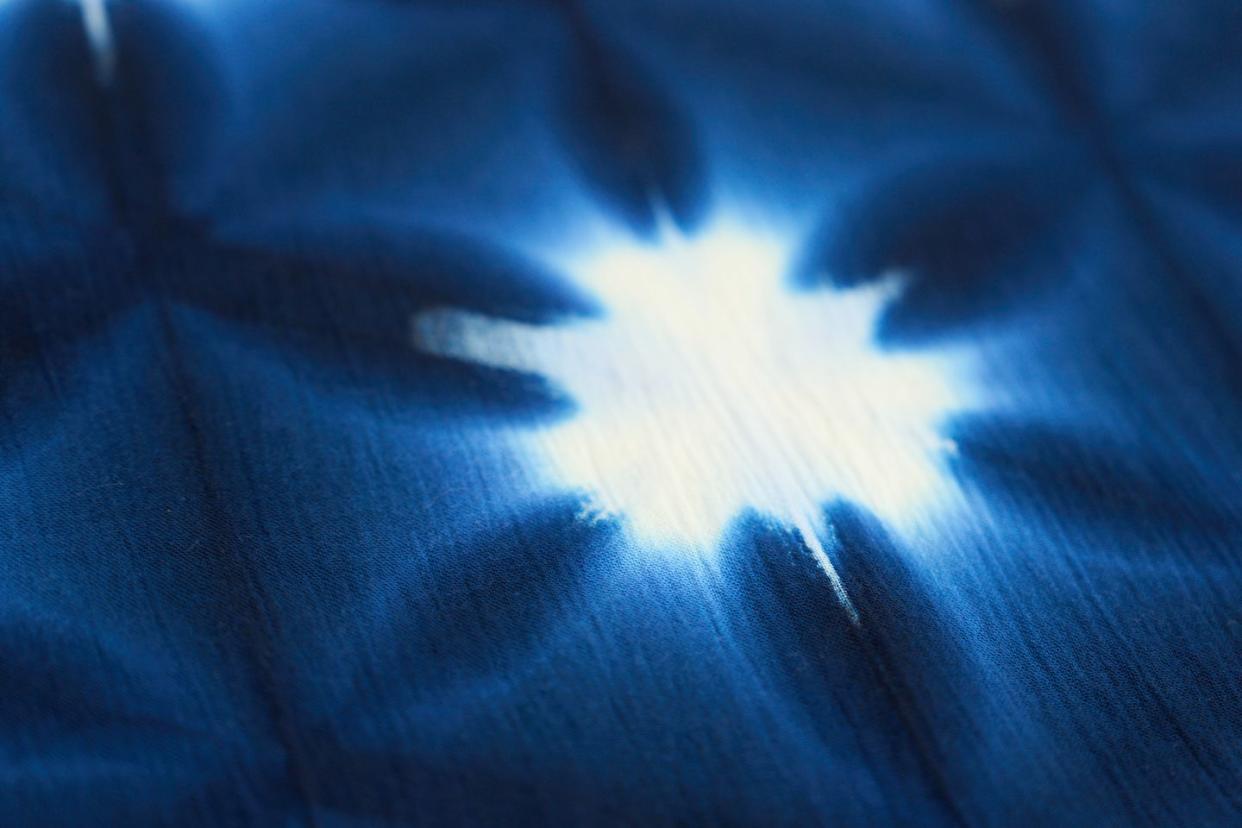
"A big problem is that we don’t have anybody to pass [shibori] on to the next generation," he explained, praising the students studying the notoriously difficult craft. "It takes years to learn a single technique. People gradually quit while learning because it takes a very long time. This collaboration gives us an opportunity to spread the word about the shibori technique and the story behind it."
The sentiment echoes something he said to me when we spoke back at the hotel. I'd asked if there was anything we hadn't talked about that he felt was important to discuss. He stressed that shibori isn't necessarily well known, even in Japan. The crucial thing is bringing the knowledge and appreciation of it to more and more people. "Through this collaboration," he said, "and the fact that you’re interviewing me right now, you can keep the tradition alive."
You Might Also Like
